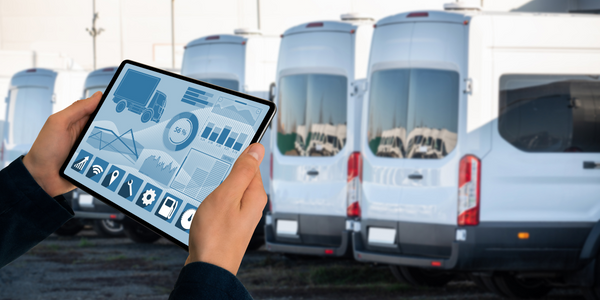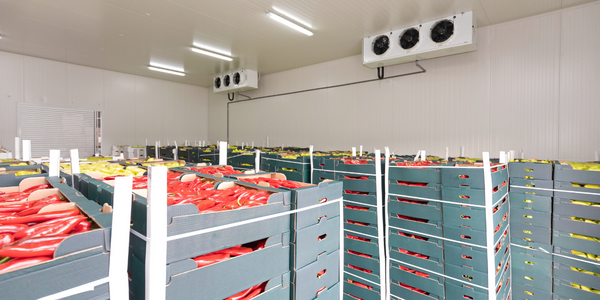公司规模
Mid-size Company
地区
- Pacific
国家
- New Zealand
产品
- GreenRoad Driver Behavior
技术栈
- In-vehicle feedback systems
- Safety reporting and monitoring
实施规模
- Enterprise-wide Deployment
影响指标
- Customer Satisfaction
- Cost Savings
技术
- 功能应用 - 车队管理系统 (FMS)
适用行业
- 运输
适用功能
- 物流运输
用例
- 车队管理
- 驾驶员表现监测
服务
- 系统集成
关于客户
Howick & Eastern is a public transport company based in Auckland, New Zealand. Founded in 1939 as Eastern Buses, the company expanded in 1962 with the acquisition of Howick Buses, adopting its current name. Today, it operates a fleet of over 175 buses, providing public transport, charter, and school bus services. As a subsidiary of Souter Holdings, Howick & Eastern is committed to safety and customer satisfaction, focusing on innovative solutions to enhance the quality of its services. The company employs over 100 drivers and is dedicated to improving road safety and passenger comfort through advanced technology and driver empowerment.
挑战
Howick & Eastern, a public transport provider in Auckland, New Zealand, faced challenges in improving road safety, reducing speeding, and enhancing customer comfort. The company aimed to achieve these goals by empowering bus and coach drivers with greater accountability, rather than relying on top-down management oversight. With a fleet of over 175 buses, the company sought a solution that would not only ensure safety but also improve the overall experience for passengers and drivers.
解决方案
Howick & Eastern selected GreenRoad for its democratic approach to driver behavior management. The GreenRoad system provides in-vehicle feedback, safety reporting, and monitoring for both drivers and managers, encouraging driver ownership of on-road behavior. This approach helps identify unsafe driving patterns and allows drivers to correct their behavior proactively. The system operates 24/7, gathering data on driver styles, vehicle performance, and areas for improvement. By analyzing this data, Howick & Eastern can identify patterns and address issues such as excessive speed in corners, ultimately enhancing safety and comfort for passengers and drivers.
运营影响
数量效益

Case Study missing?
Start adding your own!
Register with your work email and create a new case study profile for your business.
相关案例.

Case Study
Airport SCADA Systems Improve Service Levels
Modern airports are one of the busiest environments on Earth and rely on process automation equipment to ensure service operators achieve their KPIs. Increasingly airport SCADA systems are being used to control all aspects of the operation and associated facilities. This is because unplanned system downtime can cost dearly, both in terms of reduced revenues and the associated loss of customer satisfaction due to inevitable travel inconvenience and disruption.

Case Study
IoT-based Fleet Intelligence Innovation
Speed to market is precious for DRVR, a rapidly growing start-up company. With a business model dependent on reliable mobile data, managers were spending their lives trying to negotiate data roaming deals with mobile network operators in different countries. And, even then, service quality was a constant concern.

Case Study
Digitize Railway with Deutsche Bahn
To reduce maintenance costs and delay-causing failures for Deutsche Bahn. They need manual measurements by a position measurement system based on custom-made MEMS sensor clusters, which allow autonomous and continuous monitoring with wireless data transmission and long battery. They were looking for data pre-processing solution in the sensor and machine learning algorithms in the cloud so as to detect critical wear.

Case Study
Cold Chain Transportation and Refrigerated Fleet Management System
1) Create a digital connected transportation solution to retrofit cold chain trailers with real-time tracking and controls. 2) Prevent multi-million dollar losses due to theft or spoilage. 3) Deliver a digital chain-of-custody solution for door to door load monitoring and security. 4) Provide a trusted multi-fleet solution in a single application with granular data and access controls.

Case Study
Vehicle Fleet Analytics
Organizations frequently implement a maintenance strategy for their fleets of vehicles using a combination of time and usage based maintenance schedules. While effective as a whole, time and usage based schedules do not take into account driving patterns, environmental factors, and sensors currently deployed within the vehicle measuring crank voltage, ignition voltage, and acceleration, all of which have a significant influence on the overall health of the vehicle.In a typical fleet, a large percentage of road calls are related to electrical failure, with battery failure being a common cause. Battery failures result in unmet service agreement levels and costly re-adjustment of scheduled to provide replacement vehicles. To reduce the impact of unplanned maintenance, the transportation logistics company was interested in a trial of C3 Vehicle Fleet Analytics.

Case Study
3M Gains Real-Time Insight with Cloud Solution
The company has a long track record of innovative technology solutions. For example, 3M helps its customers optimize parking operations by automating fee collection and other processes. To improve support for this rapidly expanding segment, 3M needed to automate its own data collection and reporting. The company had recently purchased the assets of parking, tolling, and automatic license plate reader businesses, and required better insight into these acquisitions. Chad Reed, Global Business Manager for 3M Parking Systems, says, “With thousands of installations across the world, we couldn’t keep track of our software and hardware deployments, which made it difficult to understand our market penetration.” 3M wanted a tracking application that sales staff could use to get real-time information about the type and location of 3M products in parking lots and garages. So that it could be used on-site with potential customers, the solution would have to provide access to data anytime, anywhere, and from an array of mobile devices. Jason Fox, Mobile Application Architect at 3M, upped the ante by volunteering to deliver the new app in one weekend. For Fox and his team, these requirements meant turning to the cloud instead of an on-premises datacenter. “My first thought was to go directly to the cloud because we needed to provide access not only to our salespeople, but to resellers who didn’t have access to our internal network,” says Fox. “The cloud just seemed like a logical choice.”







